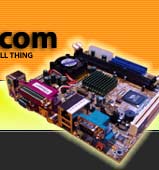|  | September 05, 2017
Choosing the right DC-DC PSU August 27, 2015
AMD's Project Quantum August 13, 2015
The Redstone PC is the ultimate Mini-ITX Minecraft Machine October 09, 2014
The "Restomod TV" April 09, 2013
Installing NAS4Free February 28, 2013
Building an XBMC 12 Home Theatre PC January 25, 2011
XBMC Guide updated to version 10.0 August 06, 2010
Building a Green PC February 15, 2010
Building an ION powered HTPC with XBMC October 10, 2008
The "Cambridge Autonomous Underwater Vehicle 2008" |
|  | | | September 12, 2008
"Florian", the DVD burning robot September 05, 2008
The "i-EPIA" May 22, 2008
The "GTA-PC" April 14, 2007
The "Digg" Case January 19, 2007
The "ITX-Laptop" December 07, 2006
The "Tortoise Beetle" October 02, 2006
The "DOS Head Unit" August 31, 2006
The "Janus Project" August 05, 2006
The "Leela PC" June 26, 2006
Nano-ITX in a Football May 17, 2006
The "EPIA Alloy Mod" April 11, 2006
Neatorama's Collection of Case Mods February 18, 2006
The "Rundfunker" October 24, 2005
The "ITX TV" October 06, 2005
The K'nex-ITX August 05, 2005
The "Waffle Iron PC" July 21, 2005
The "Supra-Server" July 18, 2005
The "Mega-ITX" July 07, 2005
The "Encyclomedia" May 25, 2005
The "Accordion ITX" |
|  | | | May 16, 2005
The "FileServerRouterSwitch" May 15, 2005
The "Mini Falcon" May 13, 2005
The "Bender PC" May 11, 2005
The "BBC ITX B" May 10, 2005
The "Frame" April 20, 2005
The "Jeannie" March 09, 2005
The "Cool Cube" January 30, 2005
First Nano-ITX Project? January 17, 2005
The "iGrill" January 15, 2005
The "Gumball PC" December 15, 2004
The "Deco Box" December 03, 2004
The "TERA-ITX" October 06, 2004
The "Coealacanth-PC" September 17, 2004
The "Gramaphone-ITX-HD" August 26, 2004
The "C1541 Disk Drive ITX" August 25, 2004
The "SEGA-ITX" August 13, 2004
The "Quiet Cubid" August 06, 2004
The "BMWPC" July 14, 2004
The "Moo Cow Moo" July 02, 2004
The "Mini Mesh Box" Full alphabetical archive on right hand side of page... |
|
|
Scythe e-Otonashi Review
Introduction
When I acquired my first Via EPIA M 9000 mini-itx motherboard I was very excited. I was already using MythTV on my AMD-based server and was looking forward to building a small computer for the family room. This was in November of 2002. Since that time I have been searching for a way to make that system, and the EPIA M 10000 I acquired later, quiet.
I tried different fans, like the Papst 412FM, which is supposedly 19db. But I have since learned that anything that tries to push a lot of air through a 40mm x 40mm hole is going to make noise.
I then purchased an EPIA ME 6000, which has no CPU fan, but rather a larger CPU heatsink. I crammed it in my Morex 2688 case and turned it on. It was nice and quiet but, sitting in my "entertainment center" on top of other equipment, the CPU soon became alarmingly hot and I had to put a fan inside the Morex case to keep it from overheating. While I don't hear the fan when I'm watching TV, I do hear it other times and find myself turning the system off when I'm not using it. Which means I have to wait one and a half minutes for it to restart when I'm ready to watch TV again.
I'm not the only one that has been frustrated by the noisy EPIA M CPU fans. Here and here are two threads in my MiniMyth forum that talk about the great lengths to which others have gone to silence these otherwise very desirable motherboards. None of the approaches really worked out for me. The EPIA M 10000 became relageted to the garage where I use it as a test system for my pet project, MiniMyth. It is shown here sadly encased in the bottom of a cardboard box.
A Ray of Hope
Then I heard about Scythe's e-Otonashi fanless case for EPIA M 10000 systems. Using a Heatlane heatpipe, this case is designed from the start to take the heat from the 1 GHz Nehemiah CPU and disappate it silently (interestingly enough, it takes the heat from the top of the CPU, and pumps it out the bottom of the case). This seemed like the perfect solution. But would it actually work? The CPU in my fanless EPIA ME 6000, when doing graphically intensive programs and sitting on top of other warm equipment can get pretty hot, in excess of 70 degrees C! And that is with a small fan in the case. Would this new case, with a faster processor and absolutely no fan, be able to handle a real world situation?
I acquired one of these cases and decided to give it a try.
Next: Inspection -->
|
|







